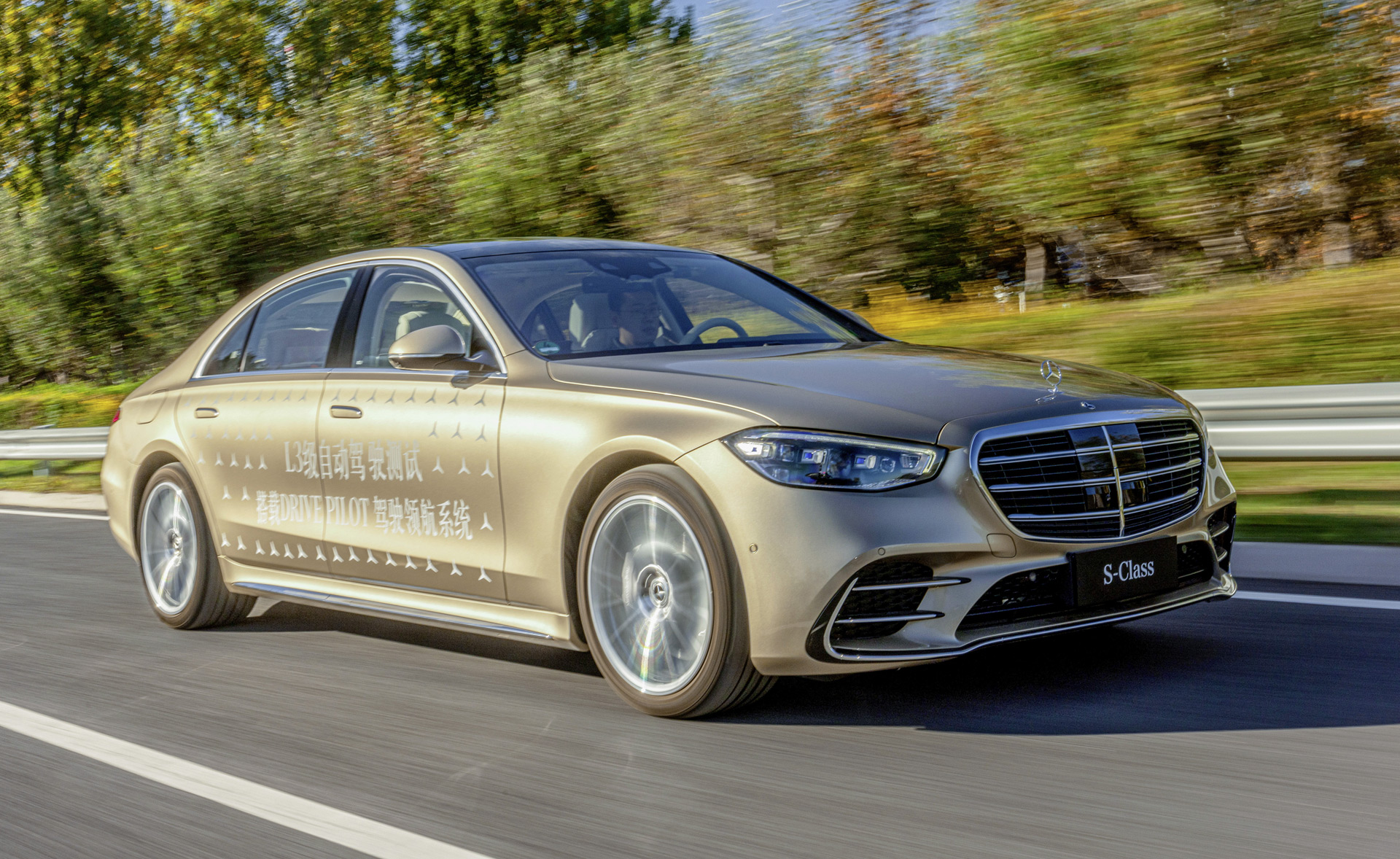- Mercedes-Benz will test vehicles with self-driving capability in Beijing
- Mercedes will be the first foreign automaker to test autonomous cars in China
- Mercedes offers a Level 3 driver-assist system dubbed Drive Pilot in the U.S.
Mercedes-Benz has received approval to test autonomous cars ranked at Level 4 on the SAE scale of self-driving capability in Beijing, making it the first foreign automaker permitted to conduct such trials in China.
Some specific tests Mercedes’ autonomous cars will perform will include parking, reversing, and turning left in busy traffic (including making U-turns), the automaker said in a post on Chinese social media on Aug. 2, Bloomberg reported.
Level 4 means a car that can operate on its own without human oversight for extended periods, though only within certain conditions. Robotaxi services like Alphabet’s Waymo One and Baidu’s Apollo Go are ranked at Level 4.
Mercedes is developing its self-driving system for private cars though the automaker could potentially use it for a robotaxi service, or license it to other companies.
Mercedes’ most advanced self-driving system on sale today is ranked at Level 3, and the system, known as Drive Pilot, is limited to only a handful of regions. A Level 3 car can operate on its own without monitoring, though only for short periods.
The Drive Pilot system is still very limited in what it can do. The system is designed to be used while slogging through traffic on select highways, and with a lead car in front and fine weather conditions required. It also only works at speeds of up to 40 mph, though Mercedes has plans to lift this limit.
Rival systems, like Tesla’s Autopilot with Full Self-Driving and General Motors’ Super Cruise, only rank at Level 2 on the SAE scale as they still require the driver to monitor the road at all times, and take back control when requested.
Mercedes’ self-driving system relies on various cameras and sensors fitted to modern cars, plus some additional system-specific hardware. These includes a lidar sensor, additional cameras front and rear, microphones to help detect emergency vehicles, and a moisture sensor in the front wheelhouse to detect road conditions.
